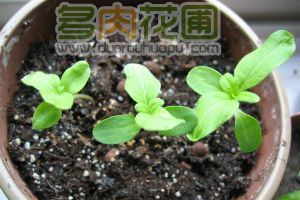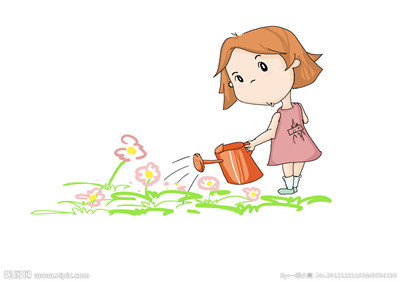The method of fertilizing flowers and plants is not suitable.
The newly planted plants are not applied.
There are many □ injuries in newly planted plants, but if they are stimulated by the outside world, they will not be able to heal and cause rotting roots.
No application at flowering stage
Fertilization during flowering will cause bud drop, flower drop and fruit drop.
III. No application during the dormant period
Flowers stop or slow down their growth during the dormancy period, slow metabolism and poor photosynthesis. If fertilizer is applied, dormancy will soon be broken, causing plants to continue to grow, which will consume more nutrients and affect flowering in the coming year.
Fourth, do not apply under the root.
With the continuous growth of flowers and plants, its root system is also gradually expanded accordingly, if fertilized under the root shoot, it is not conducive to full absorption and utilization. Therefore, depending on the growth of the plant, the acupoint should be applied at the appropriate place from the root or the edge of the basin to benefit the absorption of the root.
5. Do not apply thick fertilizer
Potted flower fertilization, the concentration should not be too large or too much, otherwise it will cause death. In general, we should grasp the principle of "applying thin fertilizer frequently", and it is most appropriate to apply one third of fertilizer and seven percent of water.
VI. Do not apply raw fertilizer
If unripe fertilizer is used, it is not only easy to give birth to worms and maggots, but also gives off a bad smell and pollutes the environment, but also ferments when confronted with water, harming the root system of the plant.
7. Not only applying nitrogen fertilizer
When fertilizing flowers, nitrogen, phosphorus and potassium should be used together, preferably with cake manure, barnyard manure, compost, chicken, duck and pigeon dung, bone powder, leaves, grass ash and other farm manure. If nitrogen fertilizer is applied alone, it is easy to prolong the growth period of branches and leaves, postpone flowering or not flowering, or flowers are light in color.
VIII. No application of diseased and weak plants
The branches of the diseased and weak plants are thin and weak, the photosynthesis is poor, the metabolism is slow, and the deficiency is not compensated. If you apply fertilizer casually, it is easy to cause fertilizer damage.

1. Newly planted plants are not applied.
There are many wounds in the newly planted plants, and if they are stimulated by the outside world, they will not be able to heal and cause rotten roots.
II. No application at flowering stage
Fertilization during flowering will cause bud drop, flower drop and fruit drop.
III. No application during the dormant period
Flowers stop or slow down their growth during the dormancy period, slow metabolism and poor photosynthesis. If fertilizer is applied, dormancy will soon be broken, causing plants to continue to grow, which will consume more nutrients and affect flowering in the coming year.
Fourth, do not apply under the root.
With the continuous growth of flowers and plants, its root system is also gradually expanded accordingly, if fertilized under the root shoot, it is not conducive to full absorption and utilization. Therefore, depending on the growth of the plant, the acupoint should be applied at the appropriate place from the root or the edge of the basin to benefit the absorption of the root.
5. Do not apply thick fertilizer
Potted flower fertilization, the concentration should not be too large or too much, otherwise it will cause death. Generally speaking, we should grasp the principle of "applying thin fertilizer frequently", and it is most appropriate to use three parts of fertilizer and seven parts of water.
VI. Do not apply raw fertilizer
If unripe fertilizer is used, it is not only easy to give birth to worms and maggots, but also gives off a bad smell and pollutes the environment, but also ferments when confronted with water, harming the root system of the plant.
7. Not only applying nitrogen fertilizer
When fertilizing flowers, nitrogen, phosphorus and potassium should be used together, preferably with cake manure, barnyard manure, compost, chicken, duck and pigeon dung, bone powder, leaves, plant ash and other farm manure. If nitrogen fertilizer is applied alone, it is easy to prolong the growth period of branches and leaves, postpone flowering or not flowering, or flowers are light in color.
VIII. No application of diseased and weak plants
The branches of the diseased and weak plants are thin and weak, the photosynthesis is poor, the metabolism is slow, and the deficiency is not compensated. If you apply fertilizer casually, it is easy to cause fertilizer damage.
It is not suitable to fertilize flowers.
① newly cut plants can not be applied: newly planted plants hurt more □, if stimulated by the outside, it can not heal, will cause rotting roots.
No application of ② at flowering stage: fertilization at flowering stage will cause bud drop, flower drop and fruit drop.
③ dormancy is not applied: flowers stop or slow down their growth during dormancy, slow metabolism and poor photosynthesis. If fertilizer is applied, dormancy will be broken quickly, causing plants to continue to grow, which will consume more nutrients and affect flowering in the coming year.
④ thick fertilizer should not be applied: pot flower fertilization. The concentration should not be too high or too much, otherwise it will cause death. In general, we should grasp the principle of "thin fertilizer". It is appropriate to use one-third of the fertilizer and seven percent of the water.
- Prev

The culture method of Gardenia jasminoides: to solve the problem of yellow leaves, buds without flowering, etc.
Gardenia is loved by the public, how to cultivate gardenia is also an issue of great concern, the following we will introduce the family breeding methods of gardenia. Gardenia jasminoides masts, called magnolia in Ningbo, originated in China. Rubiaceae, evergreen shrub. The branches and leaves are luxuriant and the tree shape is beautiful. The turn of spring and summer
- Next

Grasp the best watering time for flowers
The choice of watering time should make the water temperature close to the soil temperature as far as possible. In the same case, the difference between water temperature and soil temperature is less than 5 degrees Celsius, watering flowers is relatively safe, and root damage will not occur. Specific to the daily time of watering flowers, spring, summer, autumn and winter are also different. In spring, autumn and winter
Related
- Fuxing push coffee new agricultural production and marketing class: lack of small-scale processing plants
- Jujube rice field leisure farm deep ploughing Yilan for five years to create a space for organic food and play
- Nongyu Farm-A trial of organic papaya for brave women with advanced technology
- Four points for attention in the prevention and control of diseases and insect pests of edible fungi
- How to add nutrient solution to Edible Fungi
- Is there any good way to control edible fungus mites?
- Open Inoculation Technology of Edible Fungi
- Is there any clever way to use fertilizer for edible fungus in winter?
- What agents are used to kill the pathogens of edible fungi in the mushroom shed?
- Rapid drying of Edible Fungi

